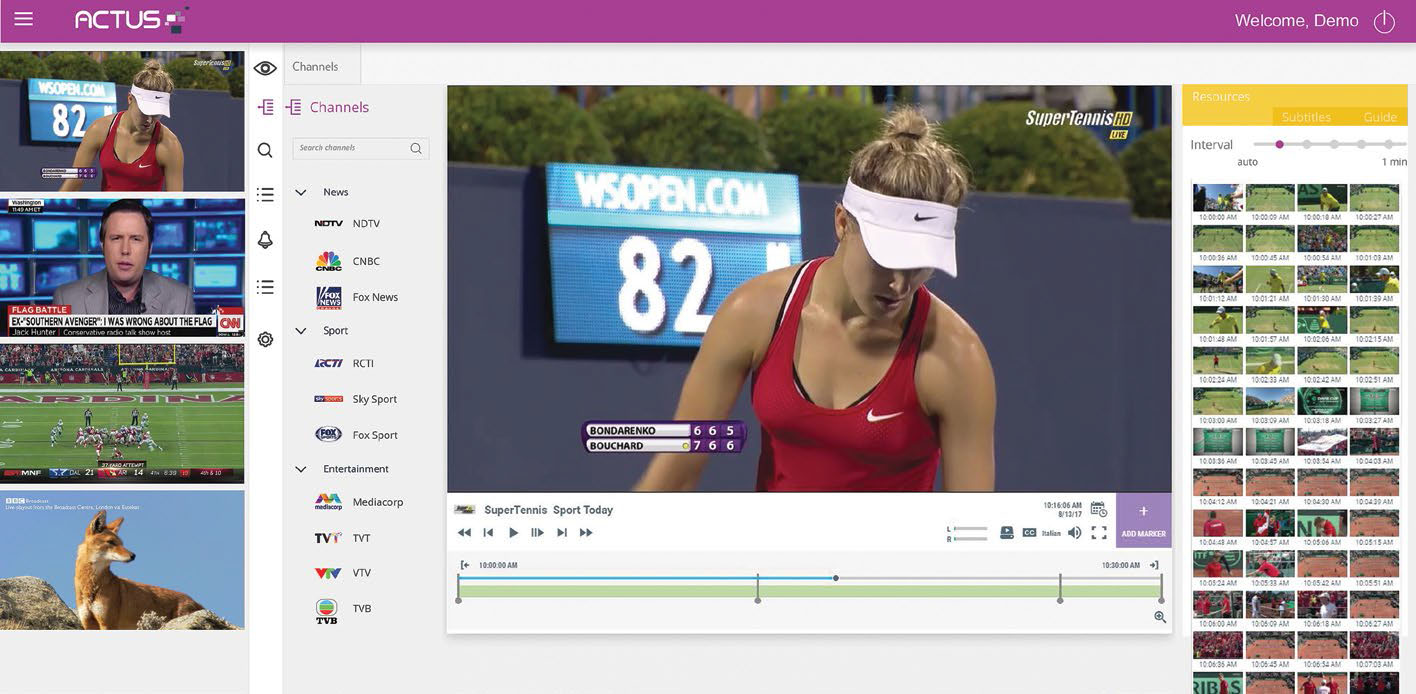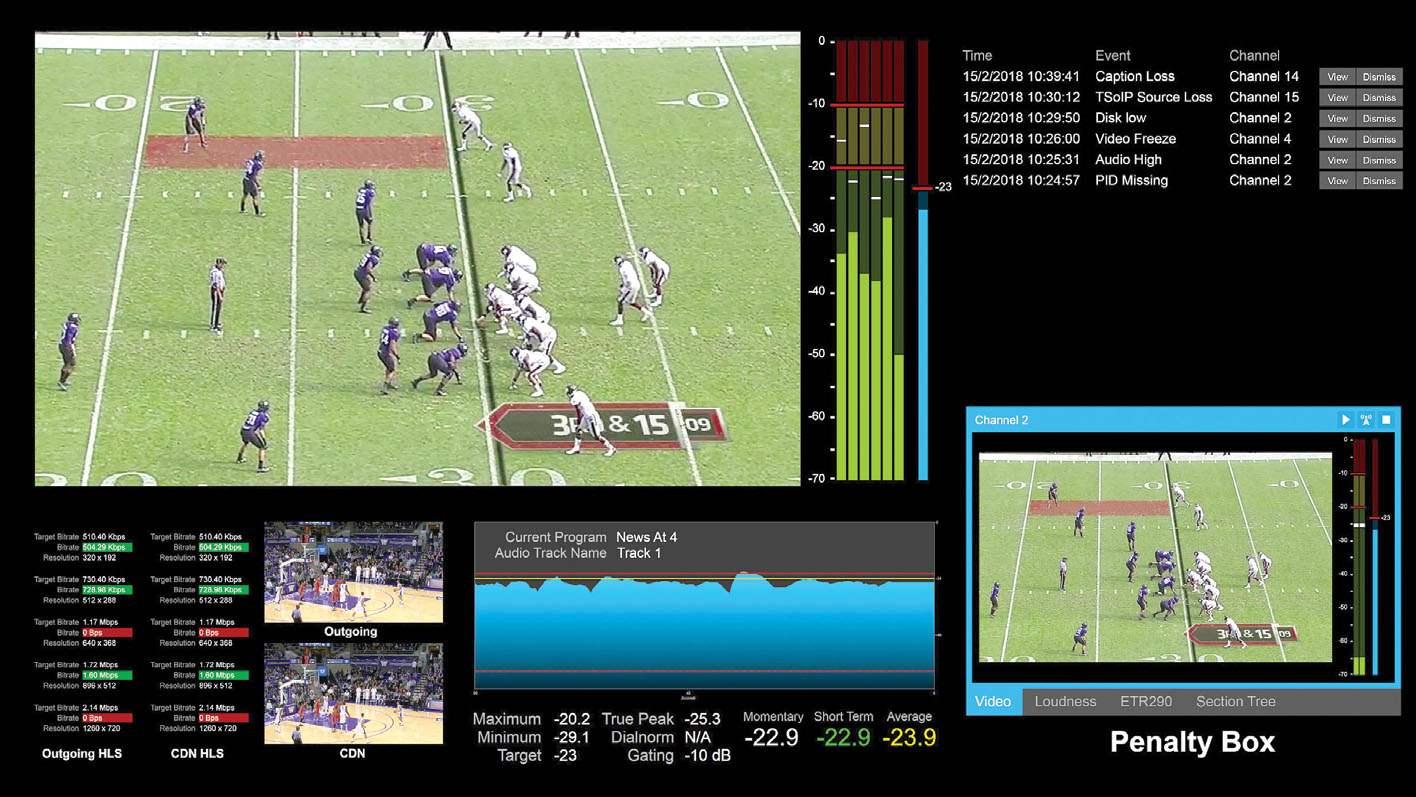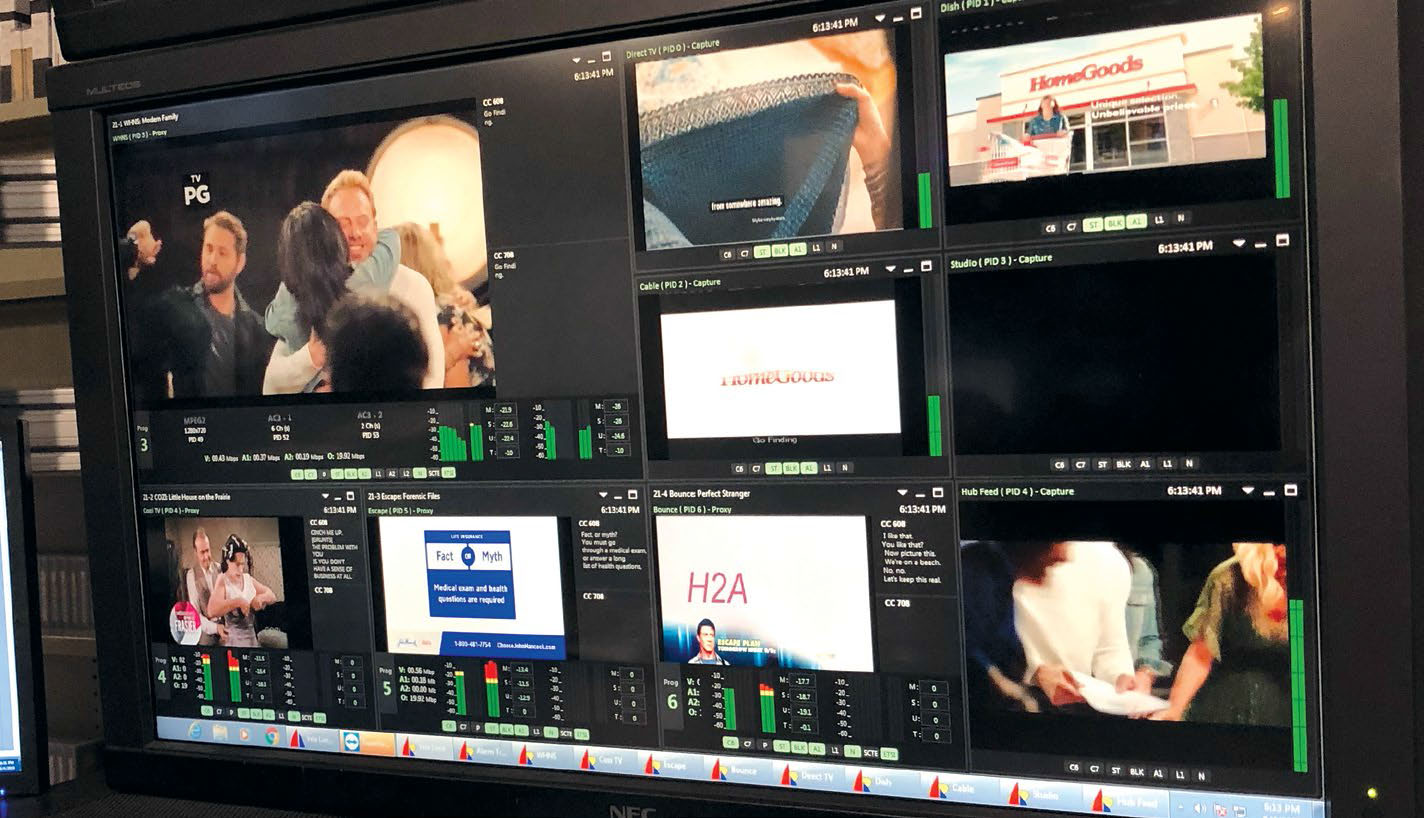Compliance Grows in Importance
ALEXANDRIA, Va.—Government regulation isn’t going away. Neither are legal battles over everything from proof of advertising to equal treatment and FCC programming requirements.

Fortunately, one of the great benefits of the computer revolution of the past 25 years is the ability for broadcasters to more easily monitor, log and preserve information regarding their technical signals and programming content. And in the current repack environment where broadcasters are being crammed more tightly together, accurate real-time (or near real-time) data regarding transmission quality is a necessity.
“‘Compliance’ generally means conforming to standards set by governments or regulators to ensure the quality of broadcasts,” said Erik Otto, CEO of Mediaproxy, a provider of compliance and analysis technology. “This applies as much to the content of programs and editorial policy as it does technical standards for distribution and transmission. To ensure consistent technical quality for TV and streaming distribution, regulators and broadcasters work with recommendations and rules drawn up by national or international industry bodies, such as the EBU, ITU and SMPTE.”
Each country and regulator will set its own requirements for compliance based on these standards or guidelines, according to Otto.

“Broadcasters have to care about compliance because it not only ensures their viewers get the best possible audio and video quality on whatever device they are watching—TV, laptop, streaming service or mobile—but that they protect themselves from regulatory action or fines if their output were to drop below standard.”
NO CENTRAL LOCATION
In this new world of compliance requirements, there is no one central location where a broadcaster gets to decide if the signal meets the appropriate standards.
The master control room at a playout center is no longer the final point for quality control, Otto said.
“Video and audio need to be scrutinized as they pass along the delivery path, through content delivery network (CDN) edge points and numerous processes such as targeted ad insertion, multilanguage selection and event-based transmission,” he said. “This means compliance systems need to have the flexibility to be implemented at any point in the distribution chain.”
Depending on the nature of your broadcasting operation, some of what you need to measure, log and analyze may be in physical locations, and some may be in the cloud.
“Compliance logging and monitoring has been changing and evolving for several years,” Otto said. “This is primarily due to the widespread adoption of file-based operations, which has allowed for a more comprehensive use of IP-based software programs to log and analyze the content of TV material in data form. The main change brought about by broadcasters and facilities storing more program files in the cloud relates to where the logging, monitoring and analysis processes take place—because the cloud is usually the closest location to a CDN edge point, packet-level inspection of the streams is most effectively carried out at this stage.”
However, broadcasters are looking around and using the cloud only when it makes sense for their operations and budgets.

“From what we’ve see in the last few years, TV broadcasters are more and more checking the option of using the cloud,” said Sima Levy, CEO of Actus Digital. “However, the change is slow for compliance systems. This is because compliance is recording a TV channel 24/7, which means lots of storage. Also, more and more TV broadcasters would like to save the recorded video in high resolution format for other purposes, such as exporting clips to social media. Higher resolution means more processing power, and these both affect cloud costs. We do see partial cloud solutions only for storage.”
Still, even for a smaller broadcaster, cloud services have some merit.
“There is a huge advantage for station groups as they can deploy localized probes to collect data and media recordings from each market, and then aggregate them to the cloud for centralized monitoring, logging and analysis to improve consistency and efficiency,” said Ted Korte, chief technology officer for Qligent. “Even for a single call-letter station, the cloud provides the scalability to log and archive as long as they wish, and the flexibility to quickly accommodate the evolution of compliance logging.”
COVER A LOT OF GROUND
Depending on the country you’re in and the regulating agency, compliance can cover a lot of ground—some of it occasionally shifting beneath your feet. In the United States, it seems like there is something new every year that makes complying with the regulations a challenge.

“Regulators typically decide on compliance requirements based on the viewing experience of people at large, public safety, changes in technology [e.g., ATSC 3.0], cultural/ religious sensitivity [e.g., broadcasters in Arab countries might have some special compliance requirements] and many other considerations,” said Ashish Basu, vice president of global sales and business development at Interra Systems. “Most broadcasters are expected to know the compliance requirements that are mandated in their markets, and prepare the facility and configure the technology infrastructure accordingly.
“The regulators have a supervisory responsibility, so if a broadcaster is found to be non-compliant, a regulator could take punitive measures such as fines,” Basu added. “For example, the FCC fined some U.S. broadcasters for being noncompliant on supporting Emergency Access Tones.”
On the subject of ATSC 3.0, this is one of the shifting compliance requirements that U.S. broadcasters face.
Compared to ATSC 1.0, ATSC 3.0 provides a lot more flexibility in broadcast systems, including the opportunity for broadcasters to send content to fixed and mobile receivers in a seamless manner, combining OTT and broadband deliveries, according to Basu.
“Another difference is the option of choosing among SD, HD and UHD resolutions. ATSC 3.0 comprises around 20 standards covering different aspects of the system,” he added. “The standards are designed to offer support for newer technologies like HEVC video encoding for video channels of up to 4K resolution at 120 fps, HDR, Dolby AC4 and more robust mobile TV support. All these new technologies embedded in ATSC 3.0 have their compliance requirements; many of those would not have been required for ATSC 1.0.”
MEETING REQUIREMENTS
Keeping track of all this, especially for stations in smaller markets, is difficult. Of course, what is required today may be different in a year, but what are we looking at when it comes to meeting compliance requirements in the U.S.?

“The FCC has requirements that vary from station to station based on their market size and audience,” said Ken Rubin, vice president of sales for Vela Research. “For example, PBS and religious broadcasters with lower-powered transmitters have different regulations they must adhere to versus big stations in larger markets. Most [broadcasters] choose to retain a copy of their content for a minimum of 90 days, but many are maintaining it for years or in perpetuity—to make use of it beyond regulatory compliance.”
The drive to improve compliance has at least as much to do with the internet as it does with traditional over-the-air broadcasting.
“Regulatory compliance has been evolving in OTA broadcast for many decades, but OTT is still in its infancy,” Qligent’s Korte said. “Most OTA broadcasters also support OTT streaming services and, as more services are being outsourced, we are seeing many more service-level agreements coming into play to keep a good audit trail end-to-end.
“Quality and reliability of OTT is improving but not quite there yet, and there are too many moving parts to replace the robustness of a traditional linear broadcast,” Korte added. “Broadcasters have proven to provide the most reliable services and, by the nature of ‘public safety’ alone, should continue to use this as a driving force for viewership.”
Compliance is a complex topic, made more complex by the interplay between broadcasters’ main over-the-air feed and the growing numbers of OTT viewers they get for their valuable news content. OTT is still something of the “Wild West,” where just about anything goes, but broadcasters want to be sure that the quality they’re paying for is delivered to the viewer. After all, if there is a failure in OTT playback, the viewer will most likely blame the broadcaster and not the CDN operator.
At the same time, broadcasters have myriad regulations to follow, and need to maintain logs and records to prove they delivered content in the proper manner. Failure to do so can lead to serious fines and license renewal problems.
Get the TV Tech Newsletter
The professional video industry's #1 source for news, trends and product and tech information. Sign up below.
Bob Kovacs is the former Technology Editor for TV Tech and editor of Government Video. He is a long-time video engineer and writer, who now works as a video producer for a government agency. In 2020, Kovacs won several awards as the editor and co-producer of the short film "Rendezvous."

